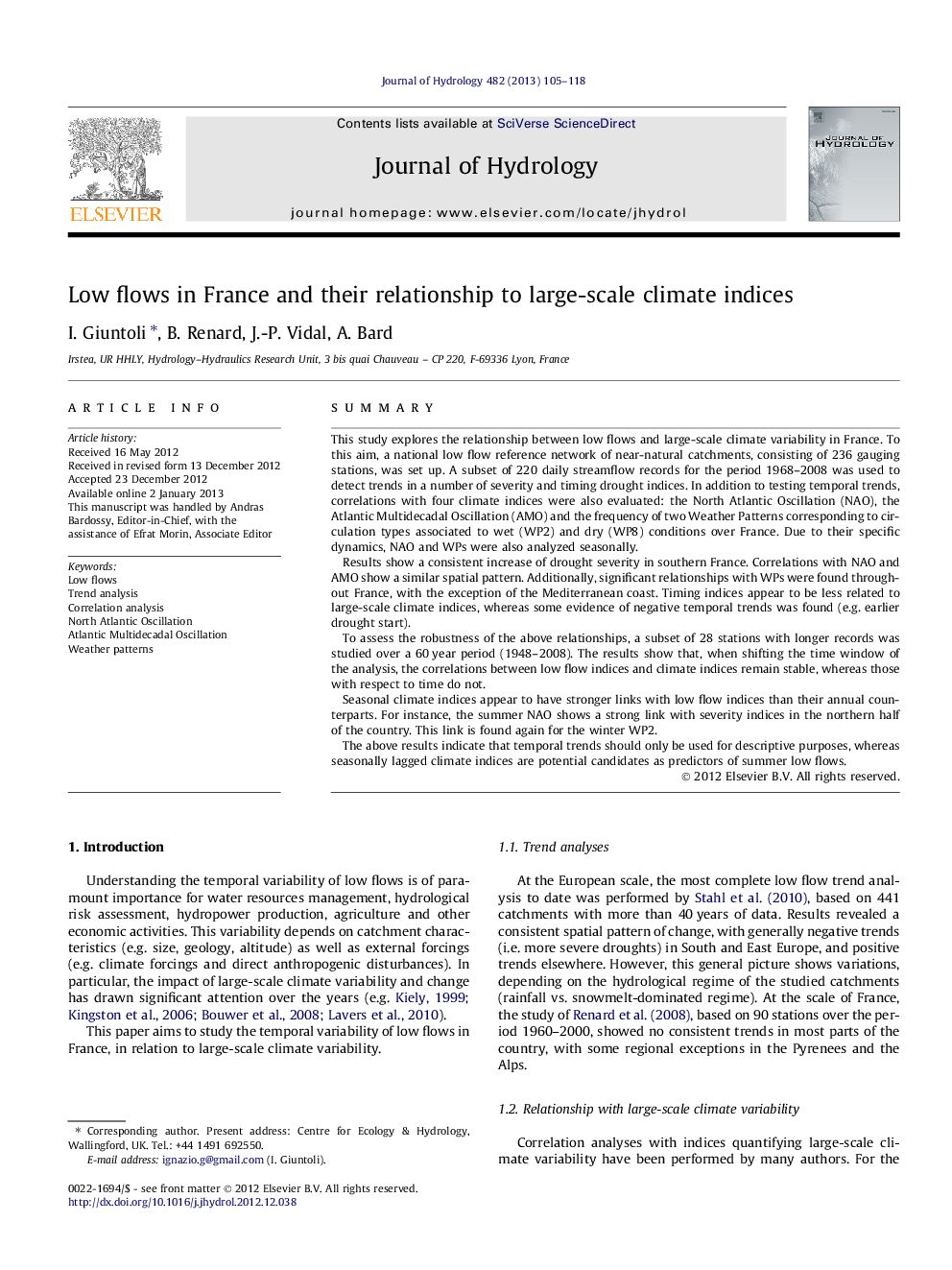| Article ID | Journal | Published Year | Pages | File Type |
|---|---|---|---|---|
| 4576462 | Journal of Hydrology | 2013 | 14 Pages |
SummaryThis study explores the relationship between low flows and large-scale climate variability in France. To this aim, a national low flow reference network of near-natural catchments, consisting of 236 gauging stations, was set up. A subset of 220 daily streamflow records for the period 1968–2008 was used to detect trends in a number of severity and timing drought indices. In addition to testing temporal trends, correlations with four climate indices were also evaluated: the North Atlantic Oscillation (NAO), the Atlantic Multidecadal Oscillation (AMO) and the frequency of two Weather Patterns corresponding to circulation types associated to wet (WP2) and dry (WP8) conditions over France. Due to their specific dynamics, NAO and WPs were also analyzed seasonally.Results show a consistent increase of drought severity in southern France. Correlations with NAO and AMO show a similar spatial pattern. Additionally, significant relationships with WPs were found throughout France, with the exception of the Mediterranean coast. Timing indices appear to be less related to large-scale climate indices, whereas some evidence of negative temporal trends was found (e.g. earlier drought start).To assess the robustness of the above relationships, a subset of 28 stations with longer records was studied over a 60 year period (1948–2008). The results show that, when shifting the time window of the analysis, the correlations between low flow indices and climate indices remain stable, whereas those with respect to time do not.Seasonal climate indices appear to have stronger links with low flow indices than their annual counterparts. For instance, the summer NAO shows a strong link with severity indices in the northern half of the country. This link is found again for the winter WP2.The above results indicate that temporal trends should only be used for descriptive purposes, whereas seasonally lagged climate indices are potential candidates as predictors of summer low flows.
► Trend analysis for low flows in France, based on 220 stations over the period 1968–2008. ► Correlations with large-scale climate variability (AMO, NAO, weather patterns). ► Unlike correlations with climate indices, temporal trends are not stable when changing the period of analysis. ► Lagged correlations could be used for seasonal forecasting.
